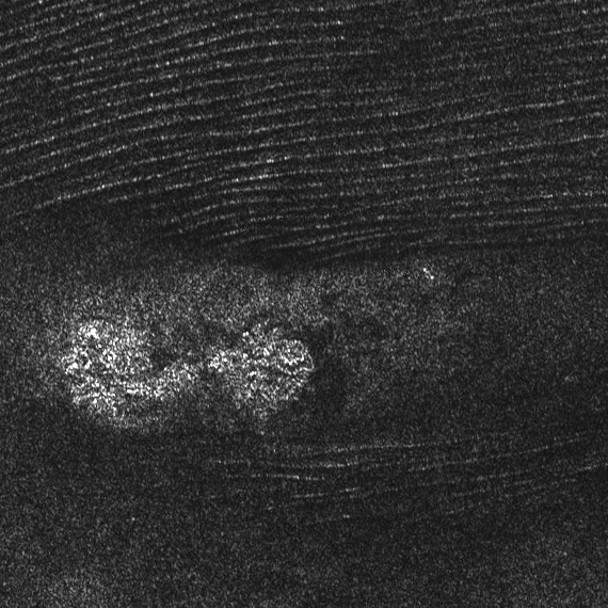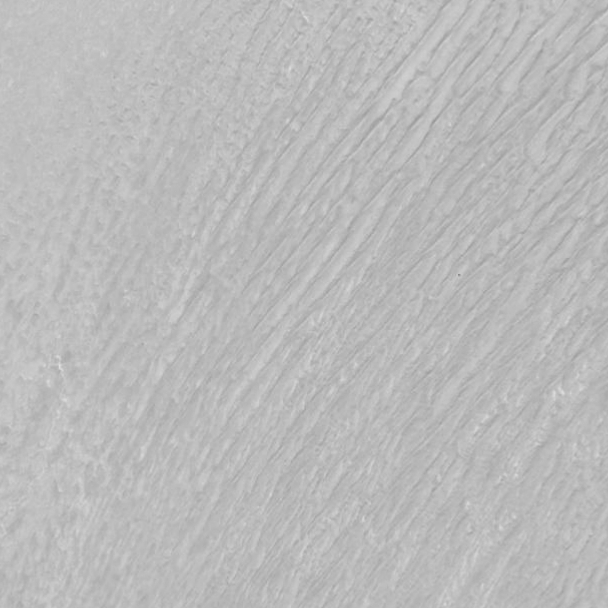June 6, 2018 : What Are The Differences Between The Dunes Of Venus, The Earth, Mars, Titan And Pluto ?
The Earth is not the only world in the Solar System where we can encounter dunes. The numerous probes sent to other worlds, planets, moons, asteroids or comets have revealed that several worlds located in our Solar System unveil dunes. That's the case for Venus, Mars, Titan and Pluto. The planet Venus, which is almost as big as the Earth, is well known for its numerous big volcanoes, for its thick and opaque atmosphere containing clouds of sulfuric acid and for its extreme environmental temperatures. But we also have to keep in mind that Venus is a dry world unveiling dunes. The planet Mars is clearly a colder world than Venus or the Earth but it also unveils dunes in its dry environment. Saturn's largest moon, Titan, is even colder than Mars and it is rich in dune fields. The Dwarf Planet Pluto, which is largely smaller than Titan, Ganymede or Mercury, reveals dune fields as well. Many questions appear regarding the dunes of those worlds. What is the origin and the nature of those dunes ? What is their dynamics ? Are there differences between those dunes in terms of size or composition ?
Why are there significant dune fields on certain worlds and not on other worlds ? Have you ever wondered whether there are typical dunes on Mercury or on the Moon ? In fact, Venus, the Earth, Mars, Titan and Pluto have the common point of having an atmosphere which is not the case for Mercury, the Moon or Ganymede. Dunes are generally the outcome of erosion. Rainfall, snowfall, rivers, seas, oceans or winds engender erosion. That's why the presence of an atmosphere is required for the development of dunes on any world. Liquid water on Earth plays a major role in the formation or development of dunes. Meteorological phenomena such as evaporation, condensation and precipitation processes engender a dynamics which makes the development of dunes possible. Obviously, liquid water is not the only liquid which can engender dunes. Other liquids such as liquid methane, liquid ethane, liquid propane, liquid nitrogen, liquid ammonia or liquid carbon dioxide are likely to engender dunes on other worlds. Thanks to the exploration of Titan via the Cassini spacecraft, we know, now, that there can be exotic types of erosion produced by another type of liquid than liquid water. There is a meteorology involving liquid methane or liquid ethane on Titan and liquid methane or liquid ethane can be found on the surface of the Orange Moon.
On our planet, there are dune fields in multiple areas. We all have in mind the dunes of the Sahara Desert in the north of Africa. But there are also dunes in Saudi Arabia, in Namibia with the Namib Desert, in the south of Africa with the Kalahari Desert, in North America with the Mojave Desert and in Asia with the Gobi Desert or the Taklamakan Desert. The Sahara Desert reveals dune fields related to the presence of an ancient pool of liquid water. Over time, a large amount of sand has accumulated in the Sahara Desert allowing the formation and the development of impressive dunes. On Earth, the composition of the dunes can be very different from one place to another place. The dunes can be composed of silicon dioxide or SiO2 like in the Sahara Desert. The Sahara Desert is in fact rich in quartz, dolomite and calcite. That implies that the Sahara Desert contains a large concentration of silicon dioxide (SiO2) and carbonate (CO3). Some sand formations on Earth can be very different from the sand formations found in the Sahara Desert. One can encounter a sand made of limestone in the Maldives. In that case, the sand is produced via the fragmentation of shells.
The geology and the biology of our planet are remarkably diverse allowing the formation and the development of various types of sand dunes. For instance, one can observe impressive dunes of gypsum (CaSO4 2H2O) in the desert of White Sands in New Mexico. One can also observe a dark sand in some areas like in the beaches of the region of the Italian city Naples located close to the famous volcano Mount Vesuvius. The dark sand found in the region of volcanoes is composed of basalt and is rich in iron or magnetite (Fe3O4). The common sand, rich in silicon dioxide engendered by the erosion of the mountains and which is transported by the streams or rivers toward the sea, can be regularly encountered on the beach along the Mediterranean Sea for instance. The composition of the dunes is closely related to the environment in which they form or develop. The crust of the Earth is mainly composed of silicon dioxide (SiO2). As a result, rainfall, rivers or winds tend to erode the crust, the stones or the rocks over time and sand can accumulate in some places. Some regions, like the area of the Calanques near Marseille in France, can be rich in limestone (CaCO3). In that case, one can encounter sand formations composed of CaCO3 resulting from the decomposition of shells in particular.
Are we likely to encounter the same kind of dunes as those found on Earth on other worlds ? If the composition of the crust is similar to that of the Earth and if there is a significant atmosphere with pools of liquid water and a meteorology involving water, we may find the same kind of dunes or we may find, at least, dunes mainly composed of silicon dioxide (SiO2). Venus looks like the Earth in terms of size and mean density. One can imagine that its global composition is roughly similar to that of the Earth. However, Venus has apparently been highly volcanic in its geological history and liquid water is simply absent on the surface due to the extremely high environmental temperatures. As a result, the processes of erosion on Venus can't be produced by liquid water. But the atmospheric pressure on the surface is remarkably high implying a significant action of winds on the soil, on the stones or on the rocks. The surface of Venus is rich in basalt. Therefore, are there dark dunes rich in iron or magnetite on Venus like on certain Terrestrial beaches in volcanic regions like Hawaii ? The Red Planet Mars is also rich in iron oxide and hosts Olympus Mons, the largest volcano in the Solar System. Mars unveils dunes like the Earth but the Red Planet is devoid of any liquid water on its surface today.
Why are there dunes on Mars ? Mars is covered by a relatively thin atmosphere rich in carbon dioxide (CO2) at the present time. The observations from artificial satellites reveal that Mars has a huge canyon known as Valles Marineris. That canyon may be the outcome of an ancient sea. That hypothetical sea may have sculpted the landscape of the Red Planet in a distant past. Researchers believe that liquid water may have been present on the Martian surface long ago. That implies that the Martian atmosphere has been heavier in the past because the atmospheric pressure on the Martian surface, today, is too weak to allow the presence of liquid water on the surface even if environmental temperatures are above zero degree Celsius. Some dunes, on Mars, may have been engendered by the action of rainfall, rivers or pools of liquid water in a distant past. One can imagine that when Olympus Mons was active, the Martian atmosphere was heavier and the greenhouse effects were stronger allowing the presence of liquid water on the surface, at least, at low latitudes. Currently, water, on Mars, appears in its solid form at high latitudes in the polar regions. Today, the Martian dunes undergo the influence of winds which are relatively weak but which can be particularly strong from time to time. Some tornadoes have already been observed on the surface of Mars from the lander.
Some worlds devoid of any atmosphere like our moon, The Moon or the moons of Jupiter, Ganymede and Callisto, can have fields of sand but the sand will not engender the type of structure we can find on Earth simply because there are no winds on those worlds to engender parallel or linear dunes for instance. Terrestrial worlds devoid of any atmosphere like Mercury, Ceres or Rhea are dominated by impact craters because there can't be erosion exerted by winds or liquid water on those worlds. Titan, the largest moon of Saturn, is covered by a deep, thick and opaque atmosphere. There is a methane cycle on Titan. That methane cycle implies the presence of clouds, lakes, seas, rivers and canyons. The radar data obtained from the Cassini orbiter have revealed the presence of linear and parallel dunes extending over long distances in the dark areas of the low latitudes or mid-latitudes of the giant moon. Are those dunes similar to the dunes we can encounter on Earth ? A parallel can be drawn between those dunes, known as Cat Scratches, found on Titan and the Seif Dunes located in the Namib Desert. However, the composition of the Titanian dunes may be radically different from that of the typical dunes of our world. The dunes of the Orange Moon may be rich in organics or hydrocarbons like benzene. A dark or red sludge known as tholin and engendered by the famous haze of the moon is thought to accumulate on the surface of Titan.
A recent study entitled « Dunes on
Pluto », published in Science on June 1st, 2018 and proposed by a team led by
Matt Telfer, a specialist of physical geography of the University of Plymouth,
reveals that there are remarkable dunes in the bright area of Sputnik Planitia
on the Dwarf Planet Pluto, close to mountains. Sputnik Planitia represents a
plain devoid of any impact crater and revealing large scale structures
reminiscent of fractured blocks of ice in the Arctic Ocean. The dunes of Pluto
can benefit from the action of winds even if the atmosphere is extremely thin.
The researchers of the study think that the dunes are made of methane ice
grains deposited via sublimation processes. The winds which blow moderately,
at speeds which can reach 40 kilometers per hour, influence the shape of the
dunes. The presence of mountains in the area seems to play a key role in the
formation or development of those dunes. The heart-shaped structure of Pluto
is apparently dominated by nitrogen ice. Doctor Matt Telfer pointed out in
particular : « It turns out that even though there is so little atmosphere,
and the surface temperature is around -230°C, we still get dunes forming.» The
nature of the dunes on Pluto is radically different from that of the typical
dunes found on Earth. The chemistry of other worlds can really be surprising !
|
The image in the upper part
of this table unveils a portion of a radar swath of Titan's surface
obtained with the Radar Mapper of the Cassini probe on October 28, 2005
during the T8 Flyby. One can notice, in particular, parallel and linear
dunes extending over long distances. The Titanian dunes, reminiscent of
the Seif Dunes found in the Namib Desert, are located in the low-albedo
areas found at low or mid-latitudes. Topographic obstacles can be
observed here. Credit
for the original radar view of Titan: NASA/JPL/Cassini
RADAR Team/Jason Perry. |
- To get further information on that news, go to: https://www.plymouth.ac.uk/news/scientists-reveal-the-secrets-behind-plutos-dunes.

